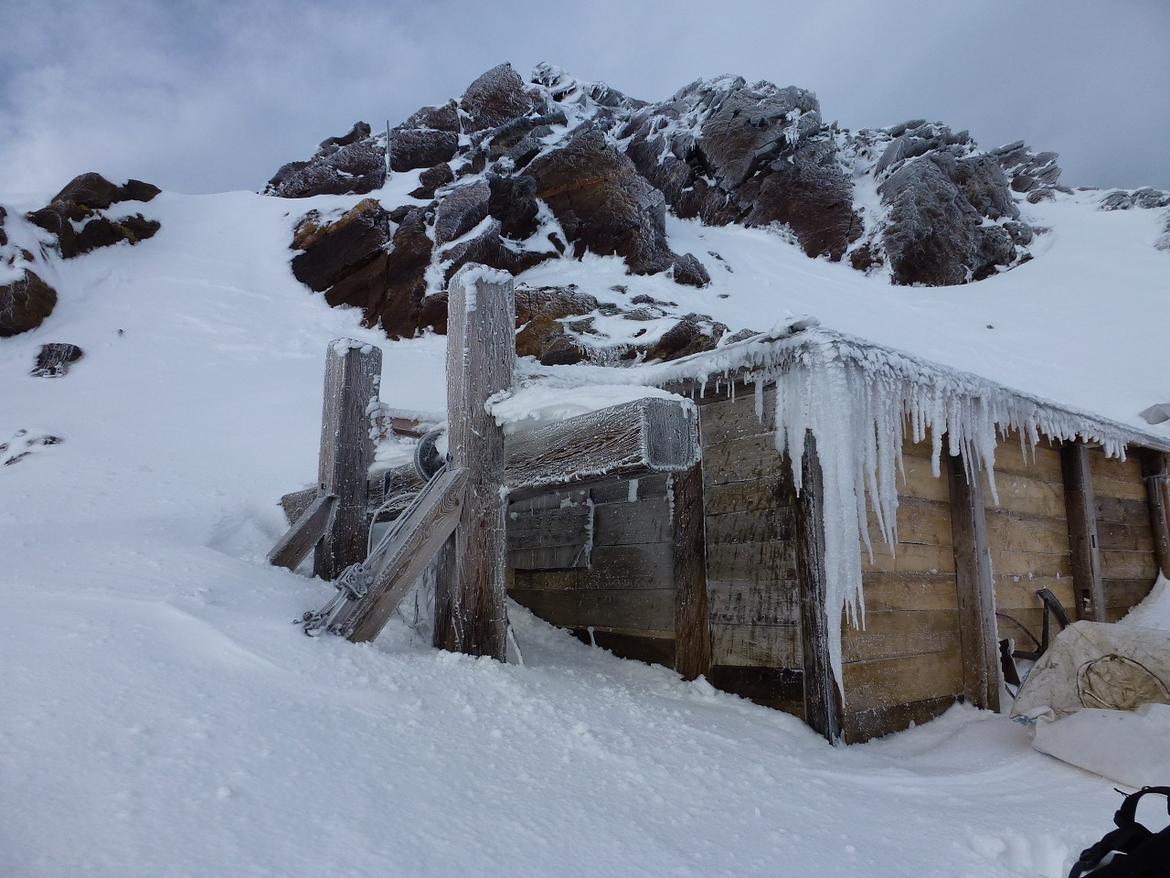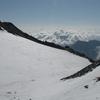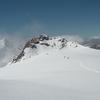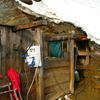Punta Linke (3629 mamsl) Ortles-Cevedale – Pejo
Punta Linke, in the Ortles-Cevedale mountain range, during the Great War was one of the highest and logistically most significant Austro-Hungarian positions on the entire front.

THE FIRST WORLD WAR: HISTORY IN THE ICE
The climate changes currently underway are progressively bringing to light evidence of the conflict at high altitude during the First World War in alpine glacial areas. In view of these new cultural findings, the Archaeological Heritage Office of the Autonomous Province of Trento's Cultural Heritage Department has started up a research project to recover this evidence using scientific methods, with the objective of reconstructing the historical and human context of these events.
Work in the Val di Pejo
In summer 2007 collaboration began between the archaeologists and restorers of the Cultural Heritage Department and the “Pejo 1914-1918. La guerra sulla porta” museum, dedicated to the First World War in the valley. Since then joint research, documentation and recovery projects have been organised at sites high in the mountains in the Pejo area. All the projects were carried out on peaks situated at an altitude of over 3000 metres: on the Piz Giumela -3593 mamsl-, Punta Cadini -3524 mamsl- and Punta Linke -3629 mamsl-. All procedures necessary for scientific recovery of the most extensive data possible were adopted, starting from fact-finding surveys to arrive at the reconstruction of contexts characterising the sites until their abandonment, through excavations using archaeological methods and the study of sources.
Historical background
In summer 1911 the Viozhütte, the highest refuge in the Eastern Alps, was inaugurated by the Alpine Club of Halle (Germany) under the summit of the Vioz - 3535 mamsl. In 1915, with the beginning of hostilities between the Austro-Hungarian Empire and the Kingdom of Italy, the alpine shelter was almost immediately taken over by the Austrian military authorities, becoming one of the tactical command centres at high altitude on the alpine front during the conflict. The fundamental role of this military complex was to coordinate operations at high altitude in its area of jurisdiction – between Colle Vioz and the Ròsole – and above all the provision of supplies coming from the valley floor. With this scope, an important cableway system was constructed, going from Cogolo (1160 mamsl) to the western peak of the Vioz, Punta Linke (3629 mamsl) in 1917. From here it crossed the Forni glacier with a further span of 1300 metres, to arrive at the important military area on the south-eastern ridge of the Palon de la Mare, today known as the “Coston delle barache brusade”, around 3300 mamsl.
The Punta Linke project
Activities to research, recover and restore the structures and findings at Punta Linke began in summer 2009 in collaboration with Pejo Museum. Due to the particular environmental conditions, the excavations were carried out in the summer months and involved the use of minimally invasive equipment, such as heat diffusers, together with light tools suitable for excavations in ice. At Punta Linke the cableway transit station was constructed inside a tunnel in the ice. Another tunnel was dug out of the rock and permafrost (permanently frozen terrain) in order to allow the ridge of the mountain to be crossed under cover. The cableway traction motor and the mechanical workshop were housed inside the wooden hut. Other barracks were constructed outside and a mountain gun battery was stationed on the plateau to the north of the ridge. When hostilities terminated the military outpost was abandoned, leaving a large quantity of materials of every kind at the site. The archaeological research work led to complete recovery of the hut, inside which the German-made diesel motor was repositioned, having been found dismounted in various parts in the tunnel. The tunnel was then freed, bringing to light the original mining structures inside, in addition to many other materials, such as an abandoned cableway carriage. Most of the mobile materials were found outside the structure: working tools, rolls of barbed wire, material for the cableway, shields, helmets, a wooden sauerkraut brining tub etc.
The finding of around a hundred overshoes in rye straw was of particular interest. These were made using a traditional technique and were worn by the soldiers during guard duties. The soles of the overshoes were sometimes made up of small blocks of wood; one of these carried the stamp of the Kriegsgefangenenlager (concentration camp for prisoners of war) in Kleinmünchen, near Linz, Austria. Other soles had names written on them (Antonio, Januk), which must have corresponded with the soldiers using the boots. The investigations and consolidation activities continued until summer 2014, requiring a major organisational, logistical and professional effort. Alpine guides from Trentino also assisted with the restoration work and activities to ensure the safety of the structures. The highly perishable nature of the findings emerging from the ice, above all those made of organic materials, made it necessary to carry out rapid initial conservation work at the site, carried out by the restorers of the Cultural Heritage Department's laboratories. In order to reconstruct the geomorphological and palaeoenvironmental history and the glacial development of the site, a team of glaciologists from the Universities of Pisa, Rome, Milan Bicocca and Padua worked at the site, together with the archaeologists of the Autonomous Province of Trento and SAP, Società archeologica from Mantua. Filming was carried out during the various phases of investigations at the site, leading to the making of the documentary film “Punta Linke. La memoria” by the director Paolo Chiodarelli Today Punta Linke has become a memorial of the First World War, probably the highest site in Europe. At Punta Linke the ice has conserved much of the supply system and this has made it possible to create a visitor itinerary of great emotional impact. The Punta Linke site was inaugurated in July 2014 and is open to the public in summer. The visit allows physical contact with environments witnessing the course of the dramatic events so long ago, which nature has returned to us perfectly intact after almost a century
How to get there: Information and visits: From Pejo, SAT path no.105 climbs up from Doss dei Cembri (about 2300 mamsl, which can be reached using the lift system) to the Refuge Vioz Mantova. Museo Pejo tel. 348 7400942, Rifugio Vioz Mantova.
Information and visits: Museo Pejo tel.no. 348 7400942, Rifugio Vioz Mantova tel no. 0463 751386 (6 (open 20 June - 20 September).
Download the guide:
Punta Linke_guida al sito.pdf 12,04 MB
Information
Provincia autonoma di Trento
Soprintendenza per i beni culturali
Ufficio beni archeologici
tel. 0461 492161
uff.beniarcheologici@provincia.tn.it
www.cultura.trentino.it/Temi/Archeologia
Museo “Pejo 1914-1918. La guerra sulla porta”
tel. 348 7400942
Rifugio Vioz Mantova
tel 0463.751386
Guide Alpine del Trentino
Information: dott. Franco Nicolis, Direttore Ufficio beni archeologici Provincia autonoma di Trento, franco.nicolis@provincia.tn.it;Maurizio Vicenzi, Direttore del Museo “Pejo 1914-1918. La guerra sulla porta” 348 7400942, museopejo@virgilio.it









